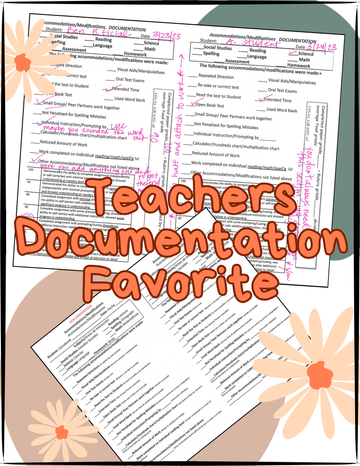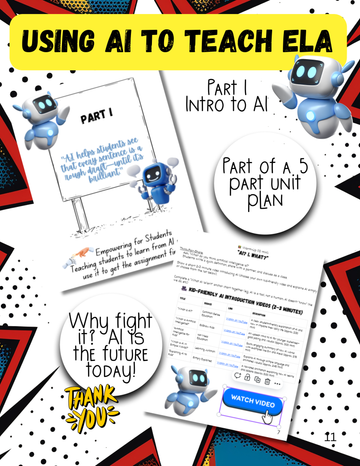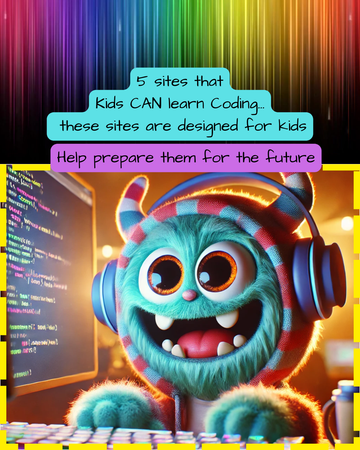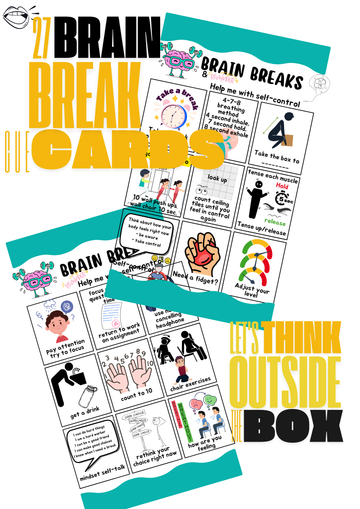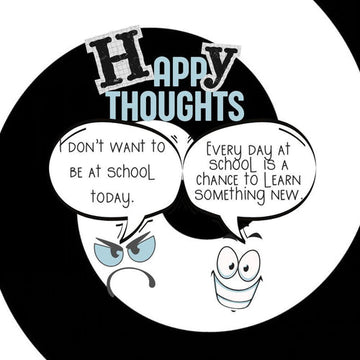 Differentiation including accommodations & modifications are essential tools that can significantly impact the academic process of students with disabilities. What exactly are modifications and accommodations and what about everyone's favorite buzzword…differentiation. It’s all so confusing! Here it is - modifications include changing the content and/or standards of an academic task to make it more accessible, accommodations refer to changes made to the learning environment or instructional style. Differentiating requires tailoring the learning environment, instructional modality and allowing for varying output (be it final product or steps in the process) based on the individual’s preferred learning style that increases their chance for success. Let’s break it down a step further because the lines for each are often crossed and it’s hard to say exactly which is which.
Differentiation including accommodations & modifications are essential tools that can significantly impact the academic process of students with disabilities. What exactly are modifications and accommodations and what about everyone's favorite buzzword…differentiation. It’s all so confusing! Here it is - modifications include changing the content and/or standards of an academic task to make it more accessible, accommodations refer to changes made to the learning environment or instructional style. Differentiating requires tailoring the learning environment, instructional modality and allowing for varying output (be it final product or steps in the process) based on the individual’s preferred learning style that increases their chance for success. Let’s break it down a step further because the lines for each are often crossed and it’s hard to say exactly which is which.Modifications vs. accommodations
When you modify things you change the content. Let’s say you are in a 5th grade class. In math, you may be teaching addition and subtraction to one student while the rest of the class is working on division. If the student has cognitive disabilities to the point that they cannot yet do division then why try to teach it. There are gaps that must be filled first. However, you could teach the addition and subtraction by having part of the division equation done and they are to complete the part that requires the addition and subtraction. In this instance, they are still being exposed to division but their objective for learning is modified. I’ll do an entire post on examples of modifications, accommodations and differentiation soon. An accommodation for that same scenario is that you provide the student with a calculator to work the division problem steps or you provide a division graphic organizer or simply let them do the work with graph paper because they struggle with lining the parts up correctly. These examples of accommodations do not change the fact that they are doing the same division as everyone else. They may only do the even problems as an accommodation. Do you see where I’m going with this? Differentiating, on the other hand, is a little bit of both. When you differentiate the same work you allow the students to have some choice based on how they learn best. You may have a student that is very tech savvy and needs to move and talk so they may do a video on how to complete each of the equations. Some students may need to hear the explanation on how to do the problem over and over so you give them a video to watch along with the work. Some students may be artistic and can do a wonderful infographic on division. Then there is always that one student that can do all the work in his or her head. As teachers we understand that eventually the work will get more complex and you need to be able to show the steps but for now you may only require them to show steps on a few problems just so you know they can. These examples of differentiating could also be considered accommodating because really that’s what you are allowing… an accommodation in the learning outcome required. The difference is semantics. The word accommodation itself is typically associated with the learning of a student with some sort of learning disability or students whose primary language is not the language taught in the classroom and they need some assistance until they are able to do the same work as the other students. Another example of modification is giving spelling words that are based on a 2nd grade level to one student while the rest of the class is working on 5th grade level spelling words - the content is changed but the subject matter is still spelling.
Accommodations and differentiating are essentially the same creature; only differentiating is what you can do for students. It’s really just best practice teaching. For differentiating, you plan your initial lesson with some sort of auditory, visual and kinesthetic modality built in and plan for various ways to demonstrate learning. There are many different ways to differentiate and oftentimes you could consider the way you differentiate an accommodation but typically not a modification. Differentiation and accommodations are both simply “different” ways to show learning. At any rate, don’t get lost in the wording. Just do what is best for the students and give them the greatest opportunity to successfully show what they have learned. The only thing you really need to keep in mind is that a modification requires an Individualized Learning Plan/Program (IEP) and if modifications or even accommodations are addressed in the IEP you are bound by law to provide those services. Differentiating is essentially just best practice teaching that allows each learner some autonomy to show what they can do in their own way but you are only bound by your own morals and ethics to differentiate.
How Essential Is Documentation?
The process of providing accommodations and making modifications should include documentation for your sake and for clarity to stakeholders. Imagine you gave a test and a student failed miserably but when you verbally ask that same student each question they have no problem explaining what was being asked so you gave them credit for all the questions they missed. You accommodated for their learning style, but without documentation it looks like they got that A - grade on their own. In the rest of this post, we'll discuss the value of documentation when providing accommodations and modifications to students with or without disabilities and provide some advice on how to document those adjustments so that everyone involved is getting a true picture of what was necessary to accomplish a learning objective.
In the process of providing accommodations and making modifications, documentation is essential. It is crucial to make sure that children get the right modifications and accommodations based on their unique and individual needs. Documentation is used as proof that you provided what they need, as well as an explanation of how they got a particular grade. It shows that it took something more to get to the objective that was set for the learning of all. It helps show that you provided something that not every other student received or needed.
Accommodations and modifications are crucial tools that can make a significant difference in the academic success of students with disabilities. When you document accommodations you refer to changes made to the learning environment or instructional methodology. When you document a modification you provide an explanation as to how the subject matter was altered. It allows other parents, other teachers and administration to see that the content and/or standards of an academic task were changed to make them more accessible.
Documentation is also critical for ensuring that the accommodations and modifications provided to the student are reasonable and do not fundamentally alter the nature of the academic task or the path of learning established for the students (which usually involves an IEP). It also helps educators and administrators to evaluate the effectiveness of accommodations and modifications provided and make necessary adjustments to ensure students receive the best possible support.
Tips for Effective Documentation
Here are some guidelines and tips for creating strong documentation that can help students receive the accommodations and modifications they need while providing a true picture to learning to all stakeholders:
Employ Clear and Specific Language: Use clear and specific language when documenting the path through learning to whatever the objective may be. The checklist that I have created covers a variety of ways you may have used to accommodate or modify a particular student’s learning style.
Provide Relevant Documentation: Provide relevant documentation by clipping a sheet to each piece of work that supports the need for accommodations or modifications. General education teachers and special education teachers can both use this document. If you are the special education teacher, provide the documentation sheets to the general education teachers as a means for them to document work when you are not available. I suggest going as far as making them copies. Nobody in education has extra time so take that barrier away for them in choosing whether or not to use the form. Run the form past your administration and put it in their ballpark to ensure the form is used by everyone and not just you as the special education teacher. This form can be used in music, art, and even PE if necessary.
Be Timely: Submit documentation in a timely manner to ensure that the student receives the accommodations or modifications they need when they need them. If you are in a pull out room then attach the sheet to each piece of work before you send it back to the teacher. Ask the general education teacher to attach the paperwork to anything they do with the students as soon as it’s done and particularly if it is something that is going home. If it is something that is done that is not pen or pencil or recorded in some way like a computer assignment or dry erase or gamification type activity then still have them fill out the documentation and snap a picture of it along with the activity.
Review and Update Documentation: Review and update documentation regularly to ensure that it accurately reflects the student's current needs and the effectiveness of accommodations and modifications provided. Remember this type of documentation can also be very helpful for students with English as a second language (or if you are reading this in another country - the primary language of the student is not the primary language of the classroom).
Ensure Confidentiality: Ensure confidentiality of the documentation and only share it with those who have a legitimate need to know. I typically staple it to the back of the work as well.
Conclusion
Providing a true picture of suitable accommodations and modifications provided to students with disabilities depends on effective documentation. Documenting differentiations just shows that you employed best practice teaching in your lessons. It enables parents, educators and administrators to comprehend the demands of the learner and offers an explanation of the appropriate support required. Educators and administrators can guarantee to parents that students with disabilities and beyond have received the adjustments to learning that they require to thrive in their academic endeavors through effective documentation. I have not heard from a single person that they did NOT appreciate the clarity that this documentation provide.
Join my mailing list for your free copy of the documentation sheet.

